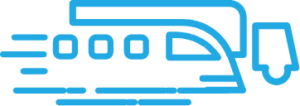Many workplaces around the world have shut down their brick-and-mortar offices since the COVID-19 pandemic infiltrated our lives. Once some executives discovered their business models could function successfully with a remote workforce, the choice to slash overhead expenses was an easy one. Others, though, were forced to close offices due to pandemic-driven income losses. But, regardless of why the change in the workspace was made, the expectation going forward is that many employers will move towards making their workforces 100% digital or shift to a hybrid model.
Optimizing for this kind of workforce begins with recruiting but must be carried through to ongoing HR processes. Below are three areas of focus for establishing superior digital and hybrid teams.
1) Increase your reach effectively. When the office location isn’t a factor for hiring, and potential candidates can come from – and work from – literally anywhere on earth, businesses have an opportunity to employ the best of the best. But, without geographic restrictions, the number of candidates will increase significantly. No human resources or recruiting team should attempt to manage that kind of influx of information without an Candidate Tracking System (ATS). An efficient digital workforce has to have the right digital tools in place right from the start.
2) Expand pre-employment screening. Process management tools, whether digital or not, can sometimes only assist with the expected. Templated information – like on a job application – provides important information that’s limited to the recruiting aspect of HR. Pre-employment background screening is a powerful tool to have in your toolbox when it’s time to finalize a candidate for hire. A third-party pre-employment background screening service can incorporate very unpredictable resources – like a candidate’s social media presence – into your screening process effectively, and without added legal risks.
3) Mitigate COVID-19 risks. For workforces that will be sharing office space again eventually, businesses need to prepare for ongoing COVID-19 transmission potential. Even though vaccinations are becoming more and more available today, this form of coronavirus is still new to the world and experts in health and science fields admit they don’t know what to expect for virus mutations and ongoing infection rates. HR should maintain regular contact with local health departments in order to stay current on news, resources, and safety tools related to the ever-changing status of COVID-19 as a pandemic and as a potentially ever-present virus that may require regular vaccinations.
Businesses that are ready to recruit, hire, and manage digital workforces effectively and efficiently will likely find out that they can provide ongoing benefits in business growth, ROI, and the bottom line.












